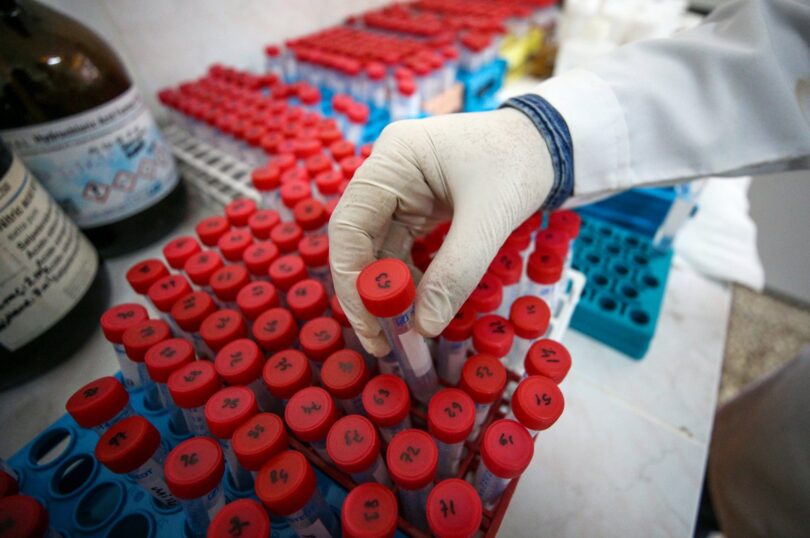ISTANBUL (AA): The first findings of scientists from the METU Marine Sciences Institute, who conducted investigations in the Black Sea with the research ship Bilim-2 throughout December, revealed that the sea water is warmer than it should be
The Middle East Technical University (METU) researchers were alarmed to discover the Black Sea warmer than it should be, pointing to possible environmental issues in the near future.
According to Mustafa Yücel, deputy director of the Middle East Technical University’s (METU) Marine Sciences Institute: “We used to find a colder layer just below the surface, which is scientifically referred to as the ‘cold intermediate layer.’ When the surface was 8 degrees Celsius (46.5 degree Fahrenheit), it used to reach below 6-7 degrees, but now that cold intermediate layer is no more, and the temperature is between 10-11 degrees. For nutrients such as nitrogen and phosphorus to return to the surface, the situation we call the ‘winter mixture’ triggered by the formation of cold waters must occur. This has never happened in the Black Sea before.”
METU Marine Sciences Institute Director Barış Salihoğlu and Yücel observed the effects of climate change in the Black Sea by conducting a research project titled “BRIDGE-BS: Advancing Black Sea Research and Innovation to Co-Develop Blue Growth within Resilient Ecosystems.” The first sea voyage of the multinational project was carried out in December 2022.
During the expedition with the research ship METU Bilim-2, examinations were made on many parameters for 30 days, samples were taken, and the first results began to be obtained.
Providing information about the first findings, Yücel said that they were scanning the area belonging to the Turkish Black Sea, from the Bosporus to the Georgian border, and that the analysis of the samples and data obtained have started in the laboratory of the institute. “We expected to find a cold sea in the Black Sea due to winter conditions, with a temperature of around 10 or 8-9 degrees, but we observed that the surface temperatures were up to 12-13 degrees.”
He stated that the Black Sea did not enter winter conditions throughout December and that the temperature was still above the seasonal norms until the end of January.
Emphasizing the risks of a warming sea in relation to seasonal cooling, Yücel said: “Cold water means a good mixture, especially nutrient salts such as nitrogen and phosphorus being able to return to the surface. This has not happened in the Black Sea yet in the amounts we want. Why do we want this? The nutrient salts that sink to the bottom mix with the surface later and trigger the plankton explosions in the spring, and support the sea products that go as far as zooplankton and fisheries, which are also the basis of our economy in the Black Sea,” he explained.
“The Black Sea has been under the pressure of additional indirect pollution from the cities that have expanded around it since the 1960s-1970s, but this pressure has decreased a bit with the measures taken in the last 10 years,” Yücel said.
He also expressed that the productivity in the Black Sea is at normal levels and that the Black Sea is in a better condition than the Marmara in this sense; however, the oxygen levels are a risk factor due to warming and other factors.
“It is now known that there is no oxygen in the Black Sea after the first 100 meters. In the 20th century, the Danube River, continental Europe and pollution loads from the north created pressure. This means more photosynthetic production and oxygen consumption, which is how marine systems work. Due to this additional pressure in the Black Sea, the depth at which oxygen is lost rises upwards. We have seen no reverse return at this time; our analyses continue,” Yücel said.
Pointing out that hydrogen sulfide starts in the Black Sea after an average depth of 120 meters, Yücel added: “Because bacteria can’t breathe oxygen, they turn to sulfate, eat and digest it and turn it into hydrogen sulfide. This accumulates at the bottom of the Black Sea; therefore, this is an exciting place with the most hydrogen sulfide on earth. However, one of the major concerns of the BRIDGE-BS project is the rise of oxygen loss. Do the oxygen loss and warming trends trigger the rise of the hydrogen sulfide layer at the bottom? If so, there will be much more serious problems; it will threaten the fisheries in the upper layer. Not to mention the harmful effects such as odor on the Black Sea coast.”
“According to our current findings, it stands at the level of 20-30 years ago. Interestingly, the depth at which oxygen is zeroed is changing, but the depth at which hydrogen sulfide starts seems stable. We will try to understand these changes with our measurements. We will repeat the expedition in the summer and present the full picture with the results of the summer and winter.”
Yücel, who shared the first findings about the carbon dioxide holding capacity of the Black Sea, stated that, unlike the Marmara and Mediterranean Seas, they saw that the surface waters of the Black Sea continued to absorb carbon dioxide in December. Still, they would understand with an additional analysis whether this corresponds to long-term carbon capture, absorption and capture.







